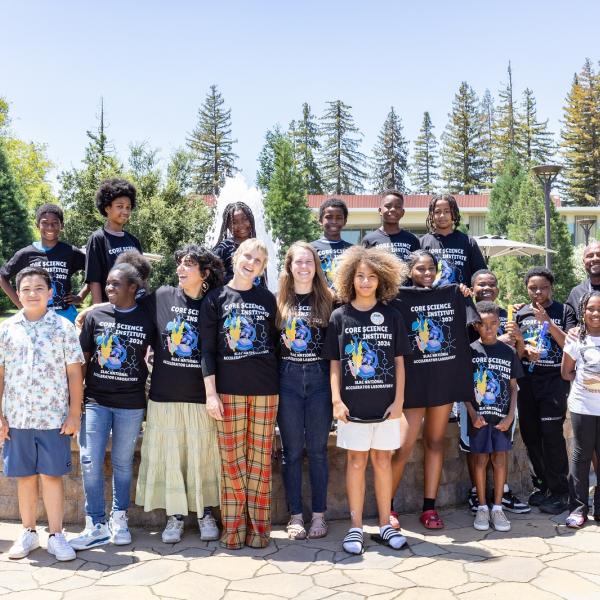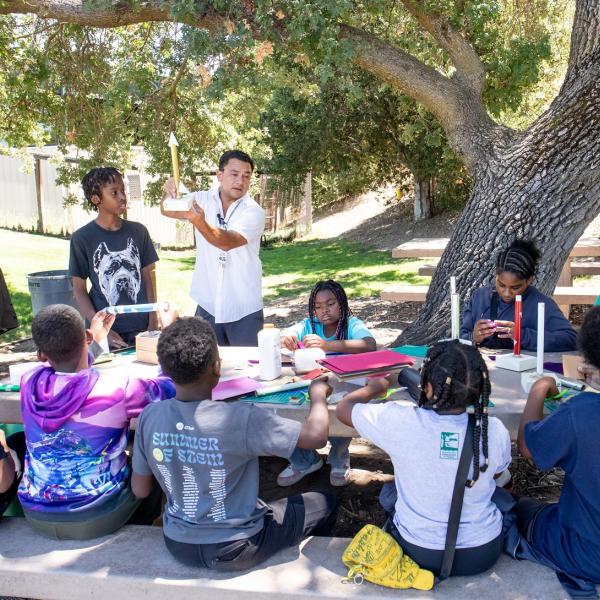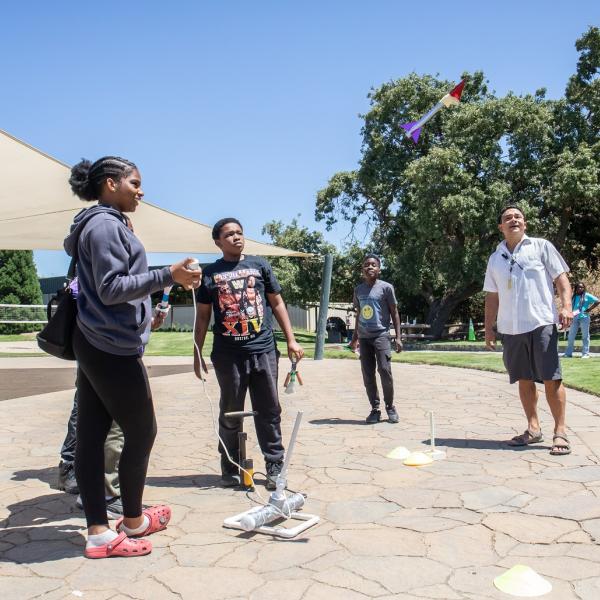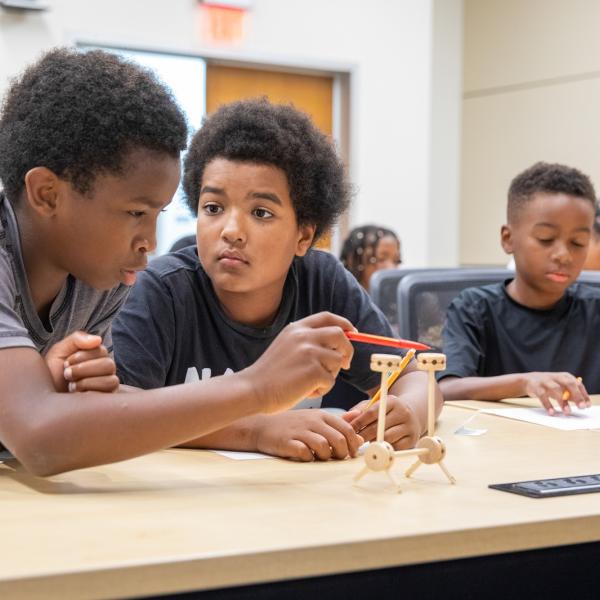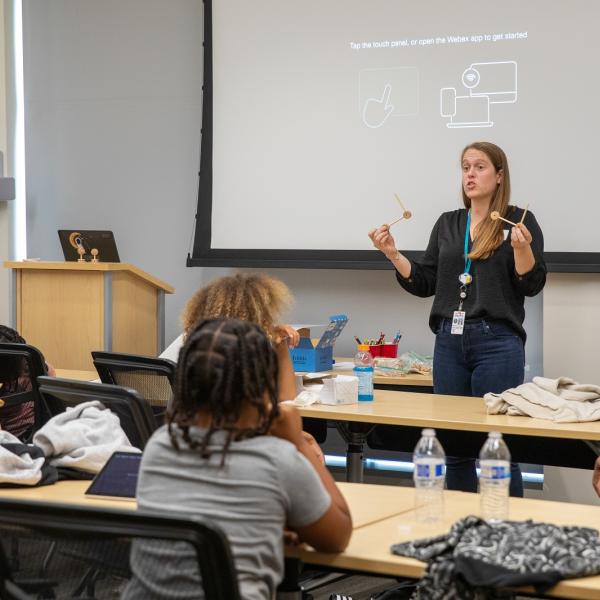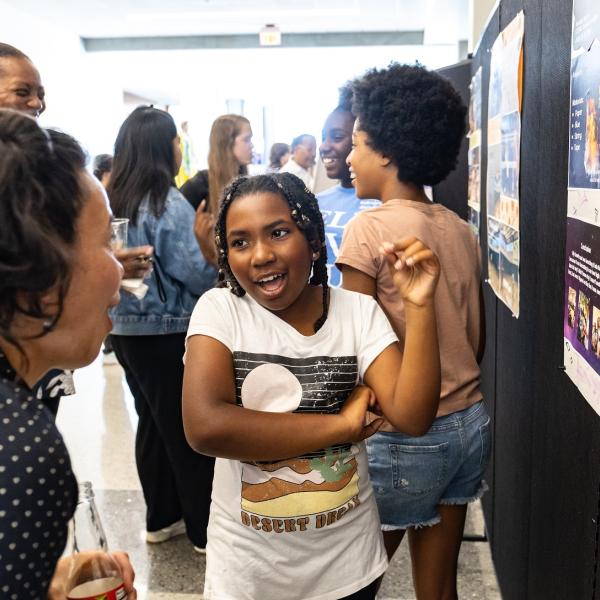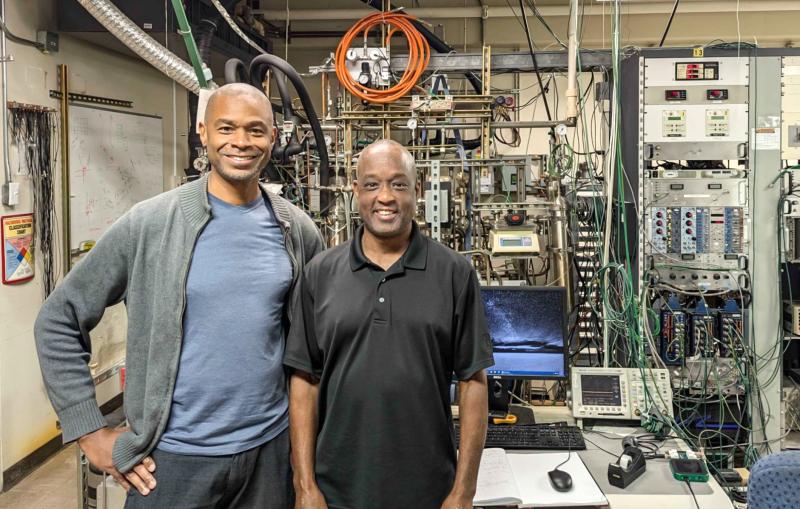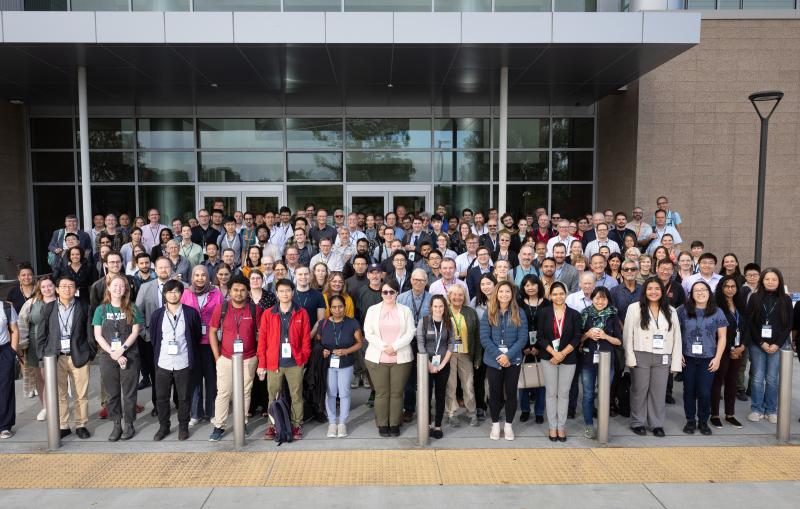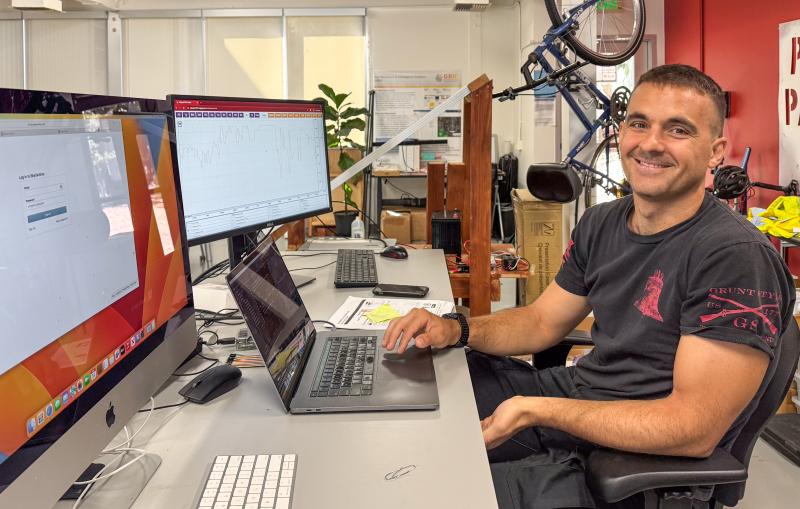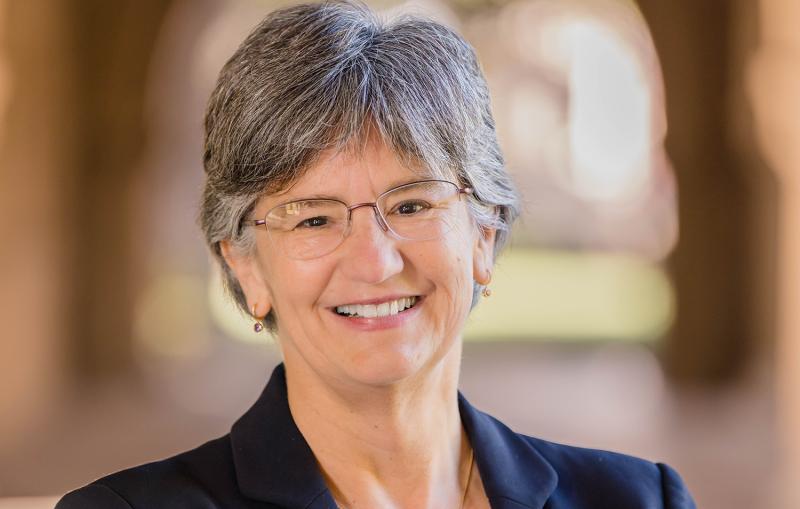Photos: Oakland middle schoolers immerse themselves in STEM at SLAC summer camp
For the 9th year in a row, the CORE Science Institute brought underrepresented youth to the lab for a weeklong summer science program that engages students in hands-on projects and cultivates a sense of belonging in science and engineering.
Earlier this month, the Department of Energy’s SLAC National Accelerator Laboratory hosted 21 students from Ile Omode School in Oakland, California, for the 9th annual CORE Science Institute (CSI). The fun-filled summer camp aims to cultivate a sense of belonging in science and engineering, especially among historically underrepresented youth.
The weeklong program included lab tours and hands-on science projects and gave students plenty of opportunities to engage with lab staff, experience how to think like scientists and engineers and learn about the different careers that support SLAC’s scientific mission.
Click through the photo selection below to see what kids and organizers were up to this year and check out more photos here.
This is what the news media had to say about CSI 2024:
- SLAC National Accelerator Laboratory hosts 21 Oakland middle schoolers for free 1-week camp (ABC7)
- Oakland students invited to a free summer camp at SLAC (Almanac News)
CSI, a non-profit entity founded by SLAC’s Committee for Outreach, Recruitment and Engagement (CORE) employee resource group, promotes science, technology, engineering, and mathematics (STEM) enrichment programs among youth in the Bay Area. Its main goal is to grow SLAC’s community outreach endeavors, focus on increasing exposure to STEM fields amongst historically underrepresented groups and give the students involved a better understanding of what a career as a professional scientist and engineer entails. Learn more about CSI here.
For more information, visit the website of SLAC’s Diversity, Equity and Inclusion+ Office.
Contact
For questions or comments, contact SLAC Strategic Communications & External Affairs at communications@slac.stanford.edu.
About SLAC
SLAC National Accelerator Laboratory explores how the universe works at the biggest, smallest and fastest scales and invents powerful tools used by researchers around the globe. As world leaders in ultrafast science and bold explorers of the physics of the universe, we forge new ground in understanding our origins and building a healthier and more sustainable future. Our discovery and innovation help develop new materials and chemical processes and open unprecedented views of the cosmos and life’s most delicate machinery. Building on more than 60 years of visionary research, we help shape the future by advancing areas such as quantum technology, scientific computing and the development of next-generation accelerators.
SLAC is operated by Stanford University for the U.S. Department of Energy’s Office of Science. The Office of Science is the single largest supporter of basic research in the physical sciences in the United States and is working to address some of the most pressing challenges of our time.
